
Kubernetes Test Drive
by Rob Richardson
About Me

Rob Richardson is a software craftsman building web properties in ASP.NET and Node, React and Vue. He's a frequent speaker at conferences, user groups, and community events, and a diligent teacher and student of high quality software development. You can find this and other talks on https://robrich.org/presentations and follow him on twitter at @rob_rich.
What is Kubernetes?
Industry standard container orchestration engine
by Google
best known for rolling updates and auto scaling
What is an Orchestration Engine?
Given a cluster of machine(s)
We specify containers' desired state
The engine makes it happen
We don't specify which machine does what
Kubernetes
Hosts containers
Either Docker containers or ...
are there any others really?
What is Docker?
Docker is an ecosystem around Container Virtualization
What are Containers?
Light-weight kernel virtualization
What is Docker?
A suite of command-line tools for creating, running, and managing containers
Containers vs VMs
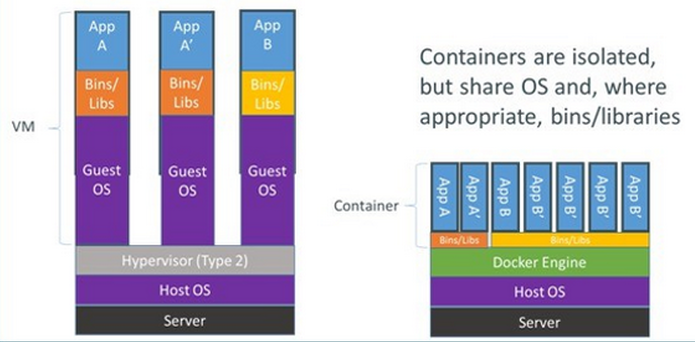
Source: http://www.zdnet.com/article/what-is-docker-and-why-is-it-so-darn-popular/
Containers
Containers virtualize and share the host kernel
Containers must run on the kernel for which they were built:
- Linux
- Windows Server
Host Docker in a VM
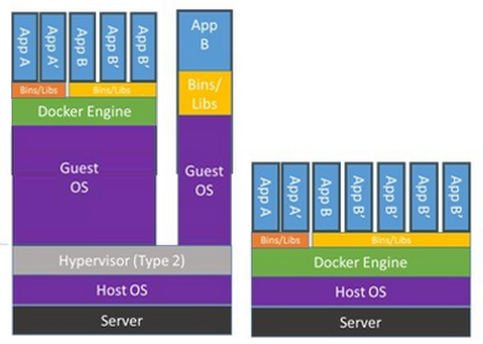
Ephemeral, Isomorphic, Deterministic Hardware
- Each copy is identical
- Don't upgrade, replace
- Many instances from one file
- Built the same each time
- Saved in a small configuration file
Docker: Dev & Ops Communication

Inside the Container:
- A machine
- Unique IP, hostname
- Build your perfect snowflake
Outside the Container:
- A process
- Plug in power and internet
- Restart quickly
- Scale by launching more
The Ecosystem
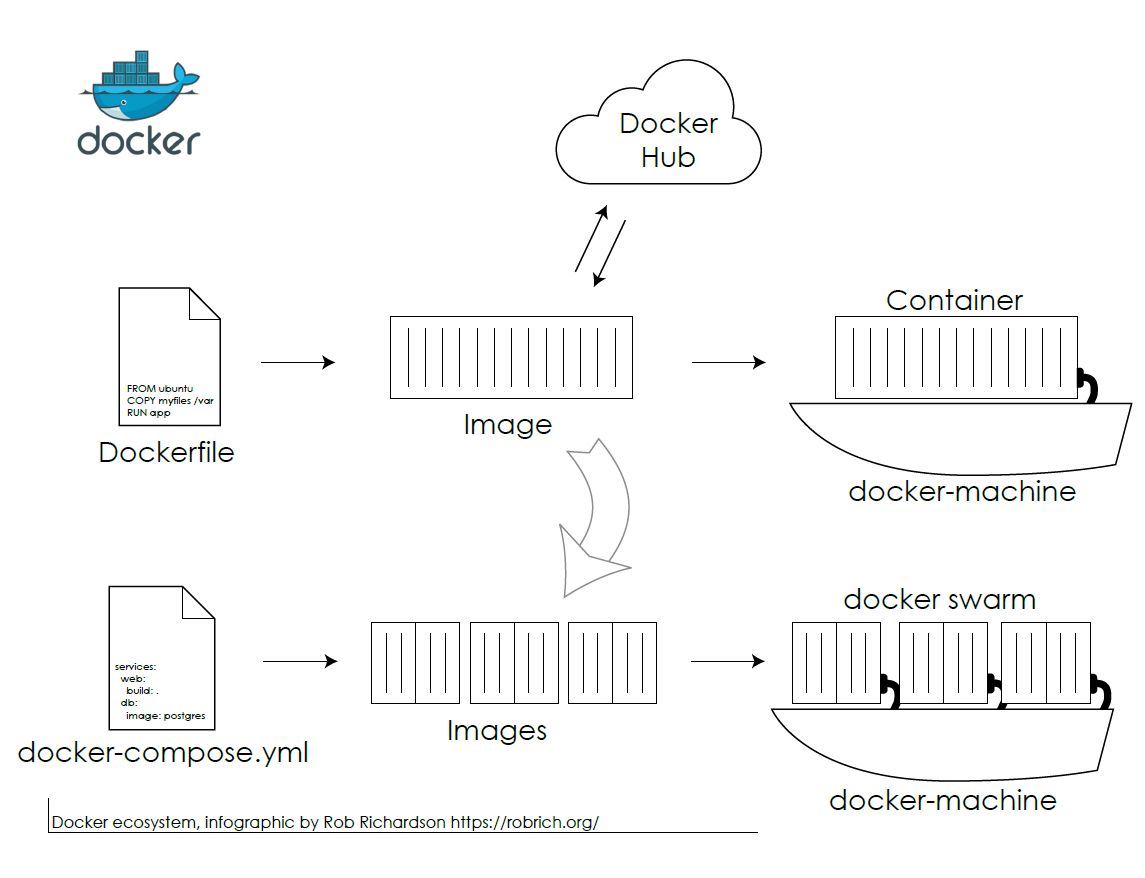
Download: https://robrich.org/slides/welcome-to-docker/docker-ecosystem.pdf
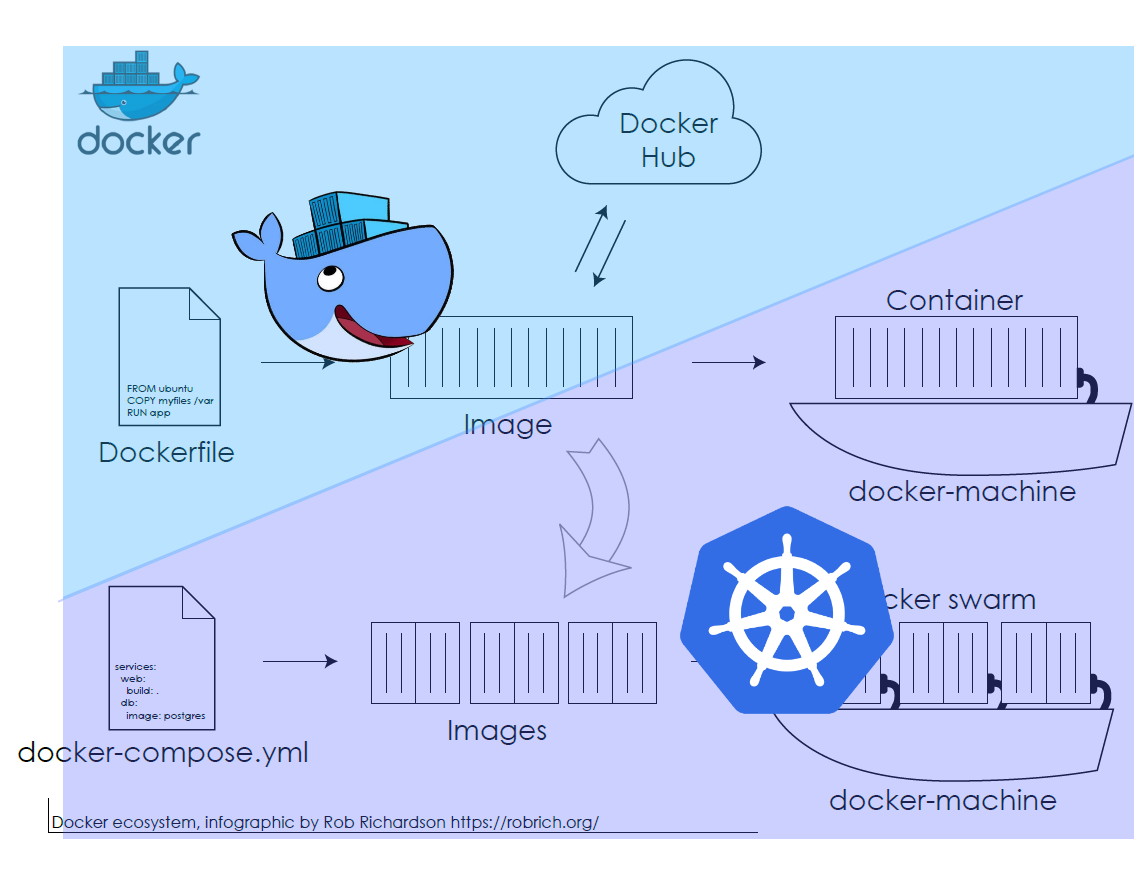
Docker -> Kubernetes
K8s: "Given a Docker image ..."
Keep
|
Replace
|
Kubernetes Scenario
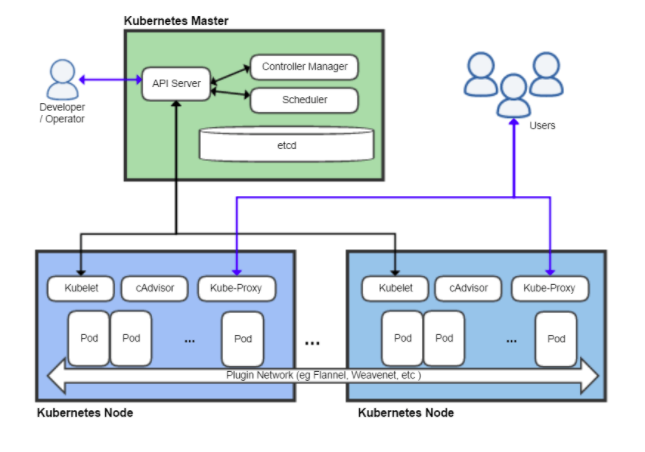
source: https://vitalflux.com/quick-glance-at-kubernetes-architectural-building-blocks/
Kubernetes gets microservices
Installing Kubernetes
Kubernetes elements
Elements
Pod |
work details |
|---|---|
Deployment |
scale / restart details |
Service |
inbound traffic |
| others | ingress, replica set, stateful set, job, cron job, secret, etc. |
Pod
apiVersion: v1
kind: Pod
metadata:
name: nginx
labels:
app: nginx
spec:
containers:
- name: nginx
image: nginx:1.7.9
ports:
- containerPort: 80Deployment
apiVersion: apps/v1
kind: Deployment
metadata:
name: nginx-deployment
labels:
app: nginx
spec:
replicas: 3
selector:
matchLabels:
app: nginx
template:
metadata:
labels:
app: nginx
spec:
containers:
- name: nginx
image: nginx:1.7.9
ports:
- containerPort: 80source: https://kubernetes.io/docs/concepts/workloads/controllers/deployment/
Deployment apiVersion
| v1.9+ | apiVersion: apps/v1 |
|---|---|
| v1.8 | apiVersion: apps/v1beta2 |
| v1.7 & 1.6 | apiVersion: apps/v1beta1 |
| < 1.6 | apiVersion: extensions/v1beta1 |
Service
apiVersion: v1
kind: Service
metadata:
name: nginx-service
labels:
app: nginx
spec:
selector:
app: nginx
type: NodePort
ports:
- port: 80
protocol: TCPsource: https://kubernetes.io/docs/concepts/services-networking/connect-applications-service/
Service Types
| no service | no traffic into pod |
|---|---|
ClusterIP |
internal port on cluster |
NodePort |
public port on each worker node |
LoadBalancer |
cloud's native load balancer |
Mapping Service to Pod
Service.yaml
kind: Service
...
spec:
selector:
app: nginx
...Pod.yaml (or template in Deployment.yaml)
kind: Pod
metadata:
labels:
app: nginx
...DEMO: yaml config files
Kubernetes cli
DEMO: launch apps
DEMO: upgrade apps
kubectl UI

kubectl UI
Warning
It's really easy to change things.
Next time you deploy
your changes will be lost.